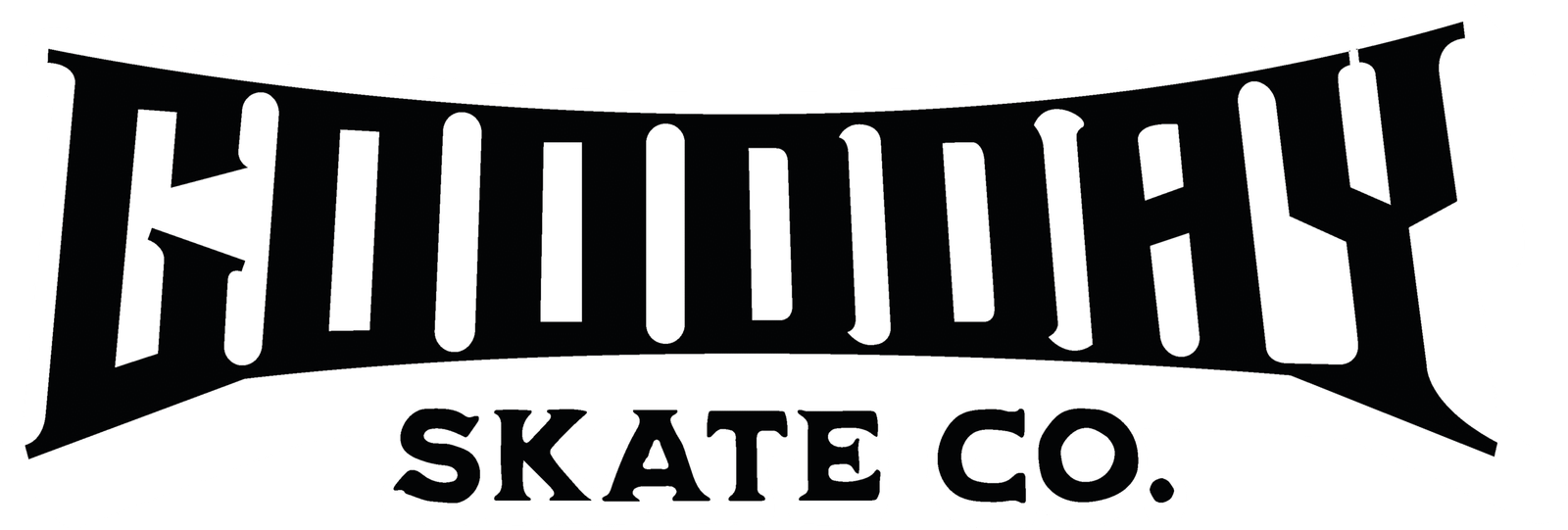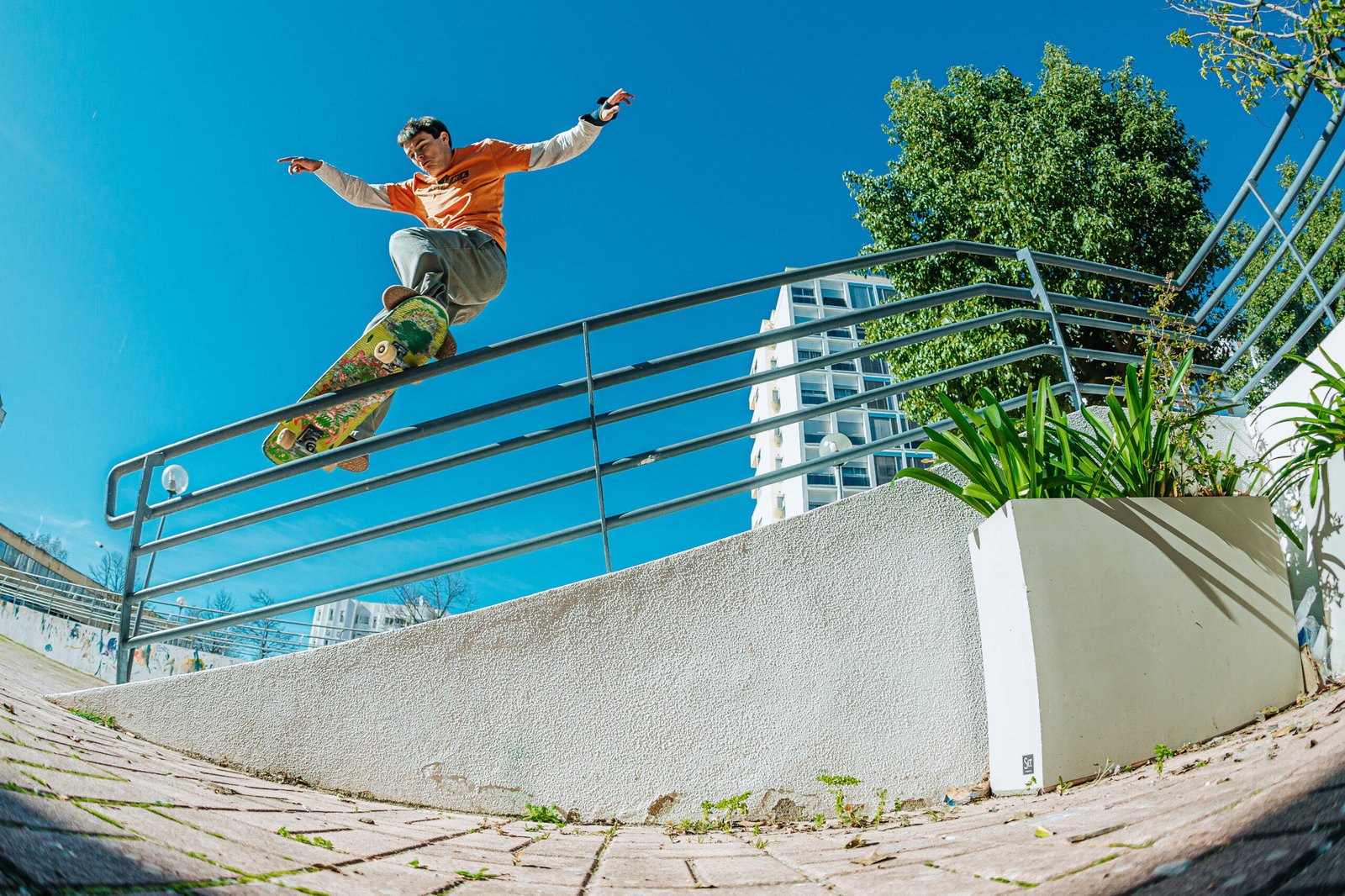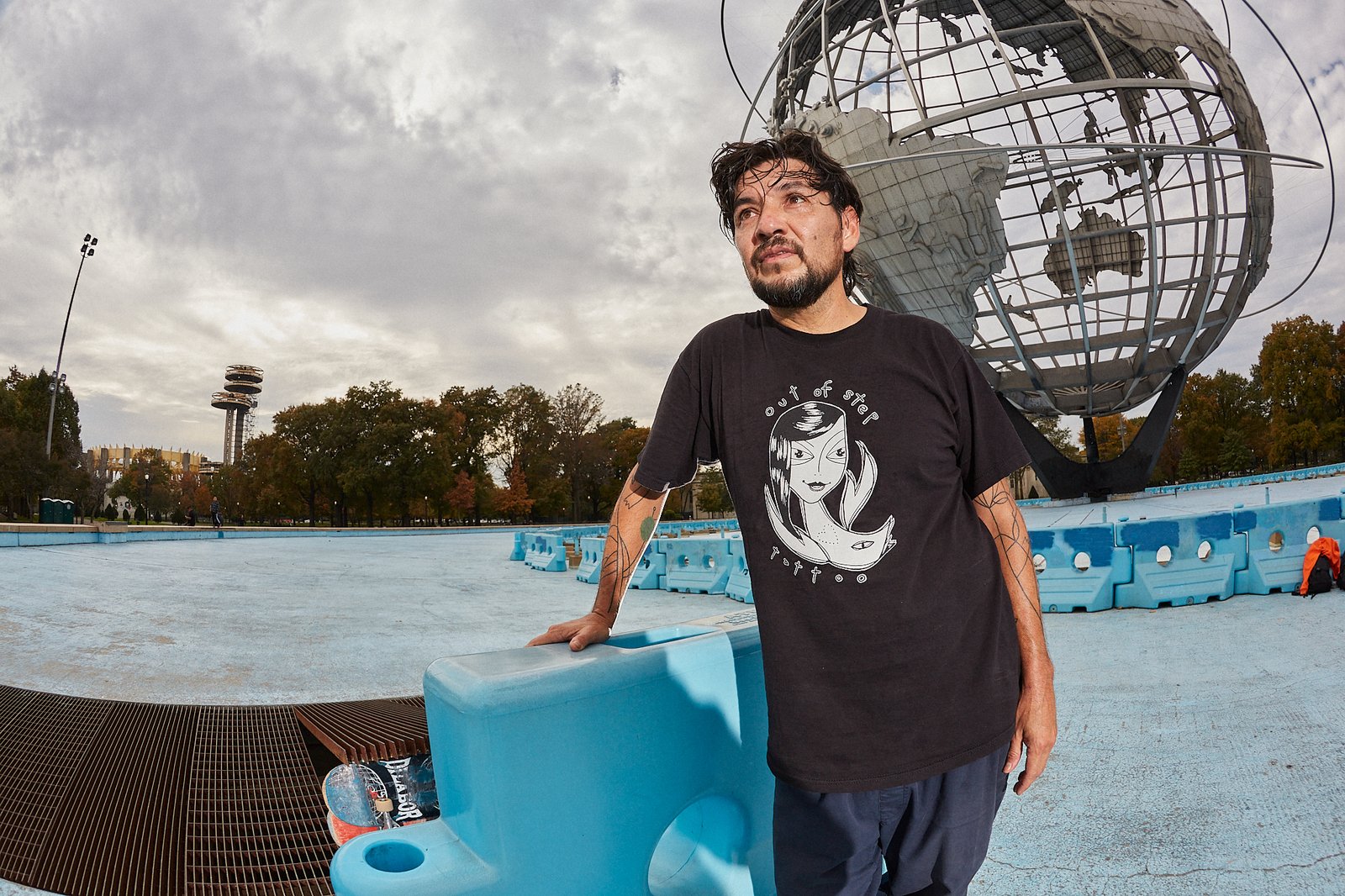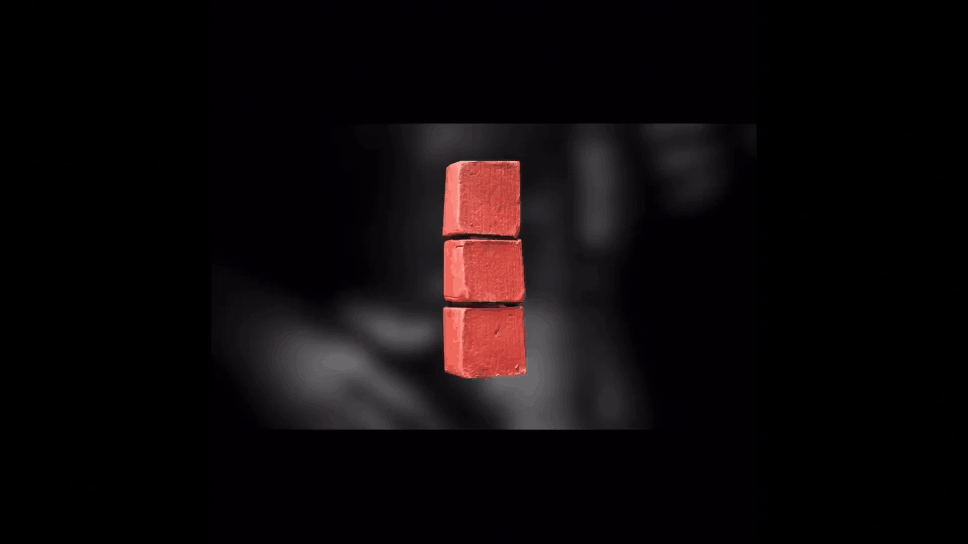“I’ve always had a fascination for photography”
An interview with Hugo Cruz
Hugo Cruz is one of those names you don’t hear shouted out loud, but you can feel it in the silence of the sessions and in the pages of Surge Skateboard Mag. He grew up in Aveiro, at a time when skateboarding was everything and life revolved around the next session. Today, at 46, he is a calm but steady presence, always with the camera in hand, looking for that right moment – not just the trick, but what’s behind it.

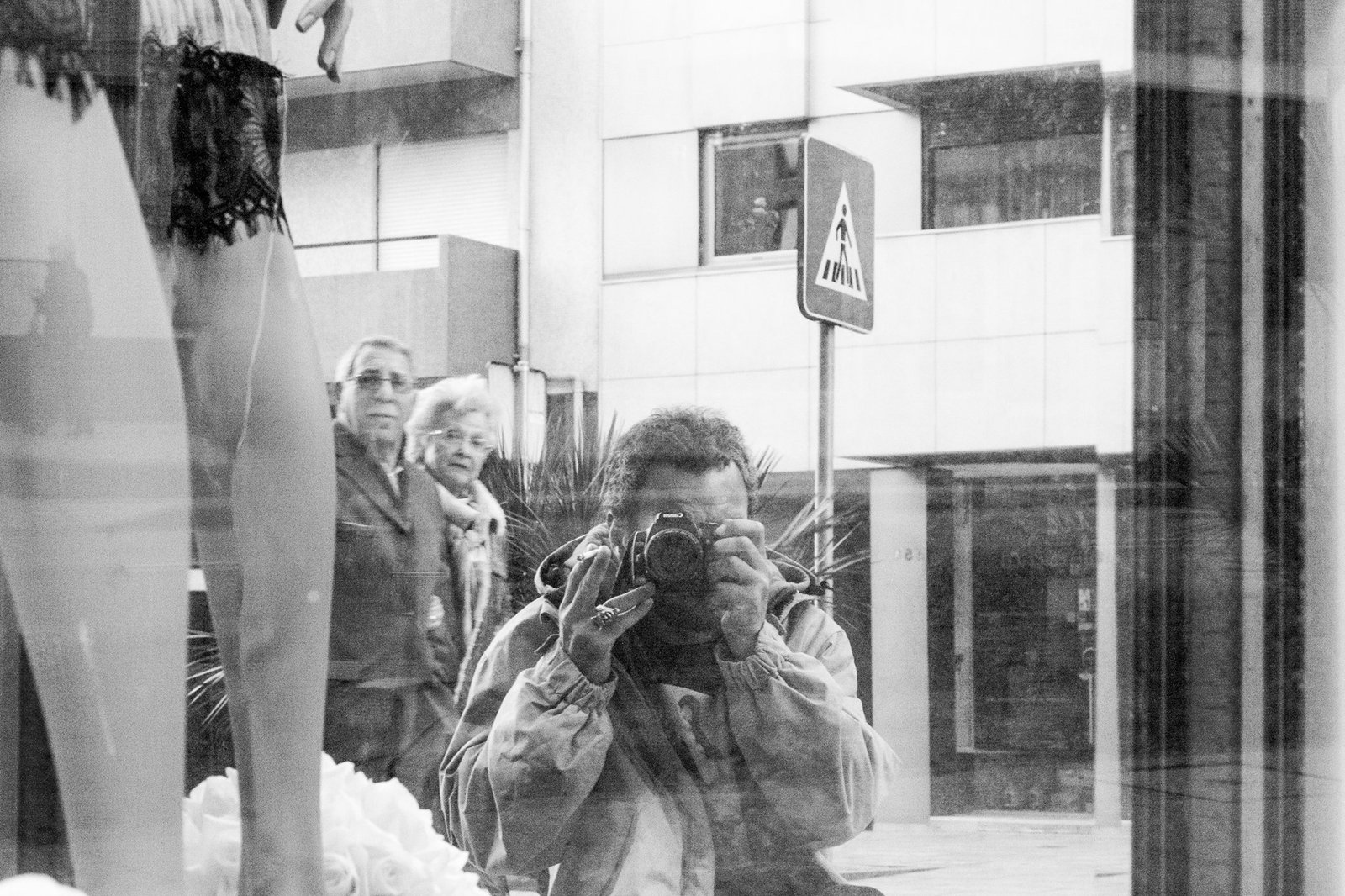
Who is Hugo Cruz when he’s not holding a camera or on his skateboard?
Dude, good question. Who is Cruz outside of skateboarding and photography? I don’t even know, bro. Honestly, I don’t even know. It’s only in this context that I feel like Hugo Cruz. Otherwise, I’m a little bit apart from society, a little out of place. And that’s it, since I don’t have many other interests, man, I end up having a normal, quiet life. Being at home, playing on the computer, sharing moments with my dear Eduarda, with our kitties. And always thinking about the next session and when the weather allows a guy to go skateboarding or take some pictures. Basically, that’s what’s on my mind all day long.
Do you remember the exact moment when skateboarding entered your life? What was it like?
Well, I think it was around 85 or 87. My childhood friends’ older brothers were surfing at the time. We used to play in the street in front of our houses and one day a skateboarder showed up with one of them or several skateboards, I don’t remember exactly. The guys were curious about it, and they asked to try it out. It’s not normal, the associated curiosity.
And there I was, I got on the skateboard, took a big fall, started laughing, and I thought that was spectacular, it was spectacular. And the scene at the time, the people were so cool, the way they moved their bodies while skateboarding and I don’t know what, man, it was beautiful and caught my attention. And from then on, it was love.

Did growing up in Aveiro influence your connection to skateboarding? What was the scene like there?
It certainly had an influence. At the time, a lot of people skateboarded, that’s what we did. We left school and went skateboarding. On the weekends, we went skateboarding. Whenever we had free time during the day, we went skateboarding.
That’s it, and that was basically all we did and thought about. There we would throw in a little football, I don’t know what else, but it was always skateboarding and the skate scene in Aveiro, well, there it is, it was always quite strong and there were always people present, there were some kind of clandestine shops and stuff and the guys were always active.
And what about photography? Was it love at first sight or something you discovered little by little?
I’ve always been fascinated by photography. Like those black and white albums at my family’s house and I don’t know what, like those impactful photos. I’ve always liked that a lot. My uncles took pictures, they had a room there to develop them and stuff. And at home, I had my father’s camera, which, well, wasn’t really within my reach, because it’s my father’s, but you can’t touch it, it’s annoying, it could get damaged, those things. And so it kind of stayed dormant inside me. Since I didn’t have access to it, I thought, this isn’t for me. That’s it, and I forgot about it. It stayed dormant there for many years.
Until one day, about eight years ago, I think, I had the opportunity to pick up a camera that was just sitting there and without understanding a damn thing about it, so I asked how it worked, or how that thing worked. Dude, they gave me some instructions, like, look, you have to pay attention to these certain parameters. Okay, and I went out with the camera. Then when I got home, they asked me to see the results of what I had done that day. Man, and I got positive feedback. They told me that maybe there was something there. And from then on, I thought, look, maybe this is for me. Okay, and I kept going. And I’ve been dedicating myself more and more to this. Each time with more pleasure and more determination.
At 46 years old, how do you balance your passion for skateboarding with the physical limitations that may arise?
I try to see the situation in a positive light. It’s like conformism, a guy gets more tired, he no longer has the ability to jump those stairs, to make those big gaps that mine used to enjoy, but he can still keep the skateboard under his feet.
But the feeling is a bit of frustration, because you were used to doing certain things and now with the lack of habit, because when I’m taking pictures I spend a little less time on the skateboard and I end up not updating myself. And then when I go to skate it’s like I have to update myself again. There’s not always the patience to update myself, so we just give what we already know and feel good about it.

Did photography come about as a way to stay connected to skateboarding when your body started asking for a rest?
Totally, but it appeared spontaneously, it wasn’t intentional. I only realized it as time went by.
And it’s a good thing I have the camera in my hand, because maybe I would show up less and less at the skate sessions, because I already have this limitation. And the cool skate scene, watching it is also good, but being there in the middle is like you know, and like everyone knows.
And when a guy isn’t ready to skate, it’s better not to show up, so you don’t end up there suffering from anxiety and with your whole body sweating.
How did you go from photographing your friends to working with Surge Skate Mag?
At the time, I was looking for photography accessories. And, well, since I’ve known Roskof for many years and I know he’s the master of the scene, I asked him if he had these accessories. Well, when it’s used equipment, you can always get a better price. Photography equipment, as everyone knows, isn’t exactly cheap.
Okay, and then through these conversations he found out that I was taking some pictures and I don’t remember if I was the one who showed them or if he asked me to take a look. Okay, and then he asked me to send him the pictures, and also if I have some event coverage, which I do from time to time, I show up and photograph the scene. Okay, there was some interest.
After that came the proposal to do a play with the skateboarder known there. Ready, and the scene went to paper and suddenly I see my name printed there. And that’s it, and that’s how it started. And it’s on.
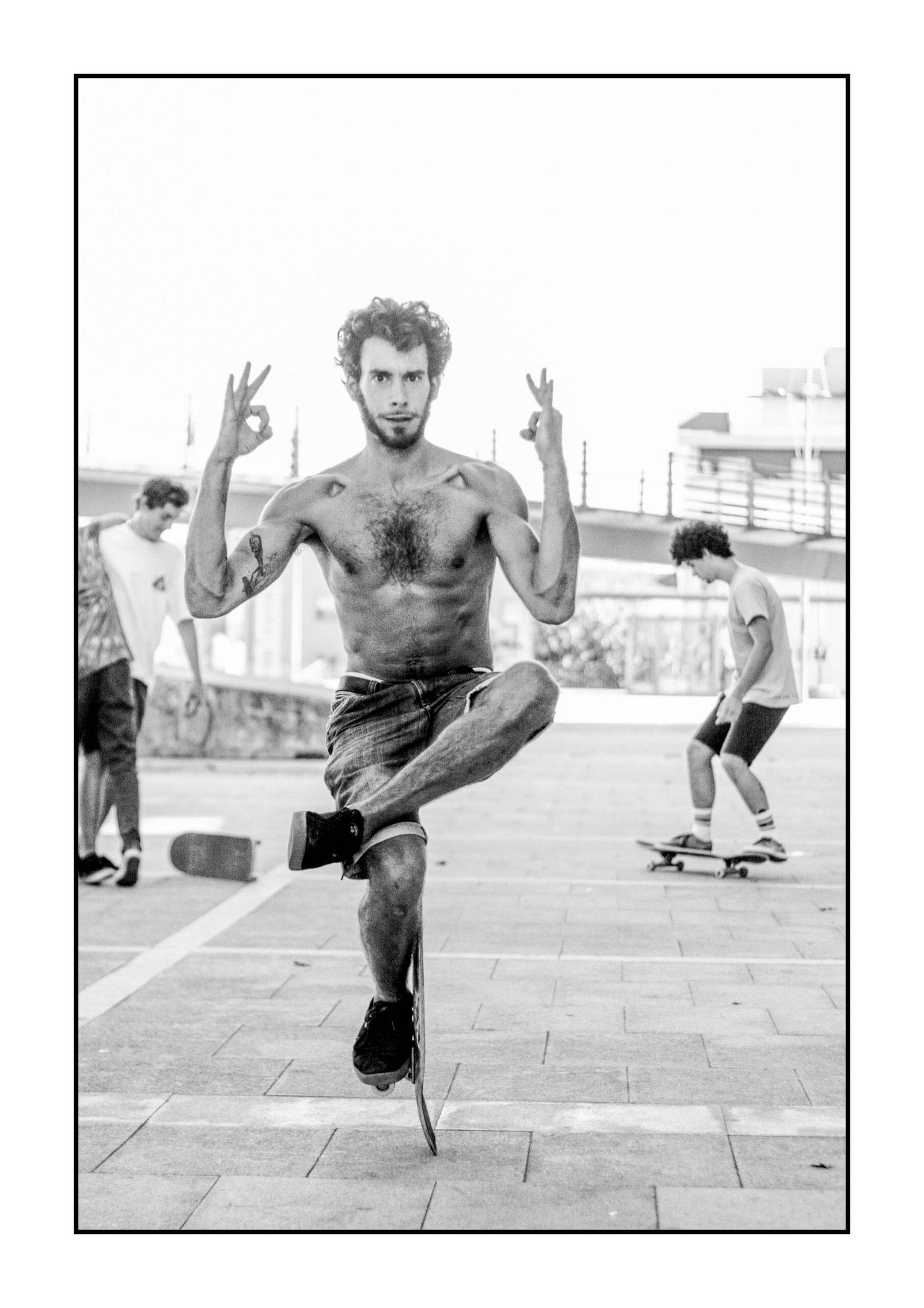
Do you remember your first published photo? What was that feeling like?
Of course I remember, of course I remember. It’s like the first fuck or like the first flip you do, you won’t forget, of course. It’s like a cool feeling, it’s a cool feeling.
The first photo was with a backside tail that I made with Gamito in Braga. I went there to photograph the skate day of an event, I don’t remember, organized there by the store, Skills at the time. Or maybe, no, wait a minute. Nepia, Nepia. It was one of the first stages of the Senas League.
And I saw the spot and gave him a tip, like, look, a little maneuver there like this and so on. And the guy liked the idea, and off we went. And it’s there for eternity.
What kind of challenges and learning did working with a national magazine bring you?
I felt a little more weight, more responsibility on top of the name. I had to start worrying a little more about the quality of the images, especially the quality of the images.
And, ready, the learning came from this feeling, from the responsibility of having a good image.
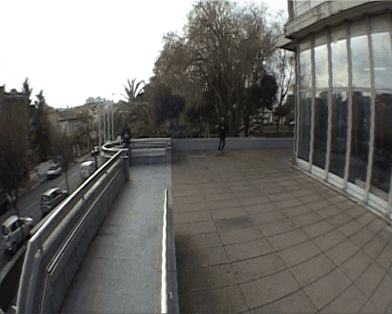
What is it like to collaborate with distributors and brands within the skateboarding world?
It’s a cool experience. I have a good relationship with all of them, although it’s not a very close relationship. We don’t talk that often or spend time together. I’m super grateful that they like the things I do and want to take advantage of them and channel them into their interests. I think it’s really cool.
You have a studio at home for product photography. How is the transition between the street and the studio?
Never let it be said that I have a product photography studio at home. hahah
It’s not quite like that. I have a no-budget studio, which is like a set-up and dismantling scene, because the house is not big. And the equipment is not at all professional, it’s all improvised and reused.
The transition wasn’t even due to the need to get in touch with me. After they found out that I took pictures, they made me an offer and I accepted the challenge. Also, since I don’t have any knowledge, I mean, I do have knowledge, but I’ve never studied photography, I don’t have any course associated with this area.
Okay, and it was a way for me to force myself to learn a new subject, which is also of interest to me. And that’s what I’ve been doing. Not as much as I would like, not as many clients as perhaps I would like, but I believe that in the evolutionary process of things we can get there. And really have a photography studio at home. hahah
When you go out to photograph a session, do you have something specific in mind or do you just let it flow?
There are both. I often leave the house with just my backpack on my back to go skateboarding and then someone or I get interested and suggest a spot and we go for it.
And other times we leave the house with things arranged over the phone and social media and go straight to the street to do what we had agreed to do, or at least try to do.
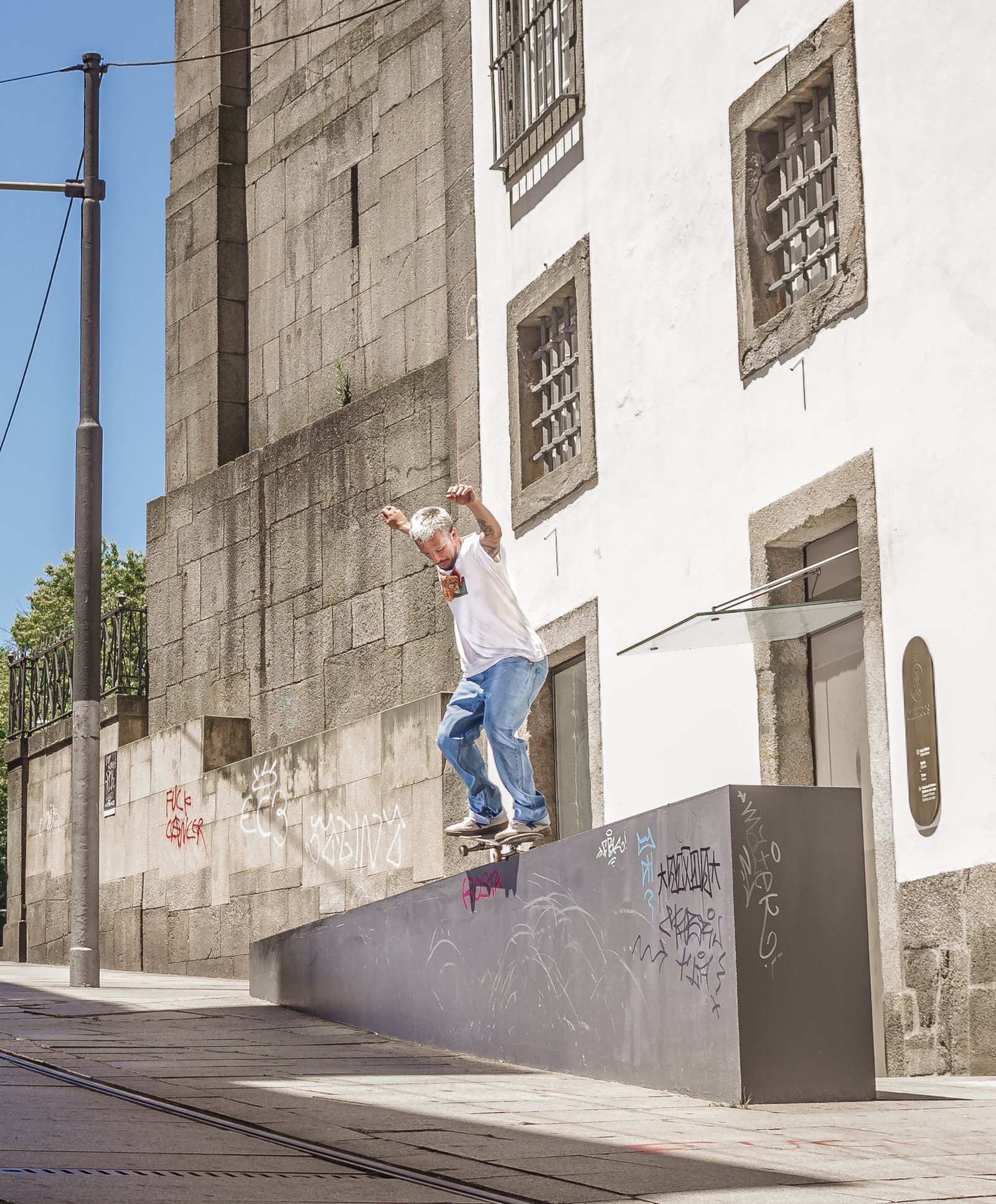
Do you prefer to capture that perfect technical trick or the spontaneity of an unexpected moment?
It depends on what you’re talking about. In skateboarding, you play spontaneously or you’ll hardly ever have spontaneous photos, but I like both.
For example, at skateboarding events, you always have the part of the people who are watching, the way they are talking or reacting to what they are seeing and it is always cool to have that spontaneity. When it is a photo of a skateboarding trick, it is already a more studied scene, it is already arranged there with the skateboarder, the crowd already knows where we are going to position ourselves, it ends up being a bit spontaneously staged.
How does your experience as a skateboarder influence your photographic perspective?
It has a lot of influence, it influences 100%. Because if it weren’t for skateboarding, I probably wouldn’t have the vision I have and the way I do things, regardless of whether it’s good or bad.
Everything I know about photography came from browsing through skate magazines over the years, without realizing what I was learning, and that information just stuck there. And then, with that information, I organically applied it in practice.
Because maybe if I came from nothing, it wouldn’t influence the way I do things so much. Maybe it would be in a completely different way. Maybe I wouldn’t be paying so much attention to capturing exactly, or as accurately as possible, the maneuver in question. It would just be maybe a person in the air with the skateboard underneath, kind of aimlessly. But yes, totally, skateboarding influenced it completely, 100%.
Have there ever been situations where you put down your camera to pick up your skateboard and join the session?
It happens a lot, yes. It happens a lot. Because there it is. I take the pictures because I skate.
And often it’s just a matter of doing those little maneuvers before picking up the camera, while the crowd is also warming up and trying to understand the spot and things like that. Or waiting for someone who went to get food or other consumables.
And other times, man, I’m taking pictures and yes, I put the camera down and also try to do a little maneuver.
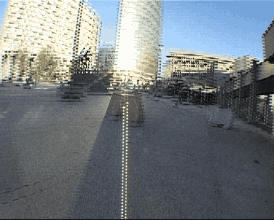
Have you ever found yourself torn between living in the moment and capturing it?
Yes, this division happens a lot. I’m there watching the action and my blood starts to boil. But I usually choose to record the moment. It’s always better to have this record than just the memory of having been there.
Are you more of a digital person or do you still have a soft spot for analog?
Without a doubt, analog. Analog is that scene.
But in the case of skateboarding, it is not financially viable to work with roller skates. And with a digital camera, everything ends up being much more practical, simple, easier, and cheaper too.
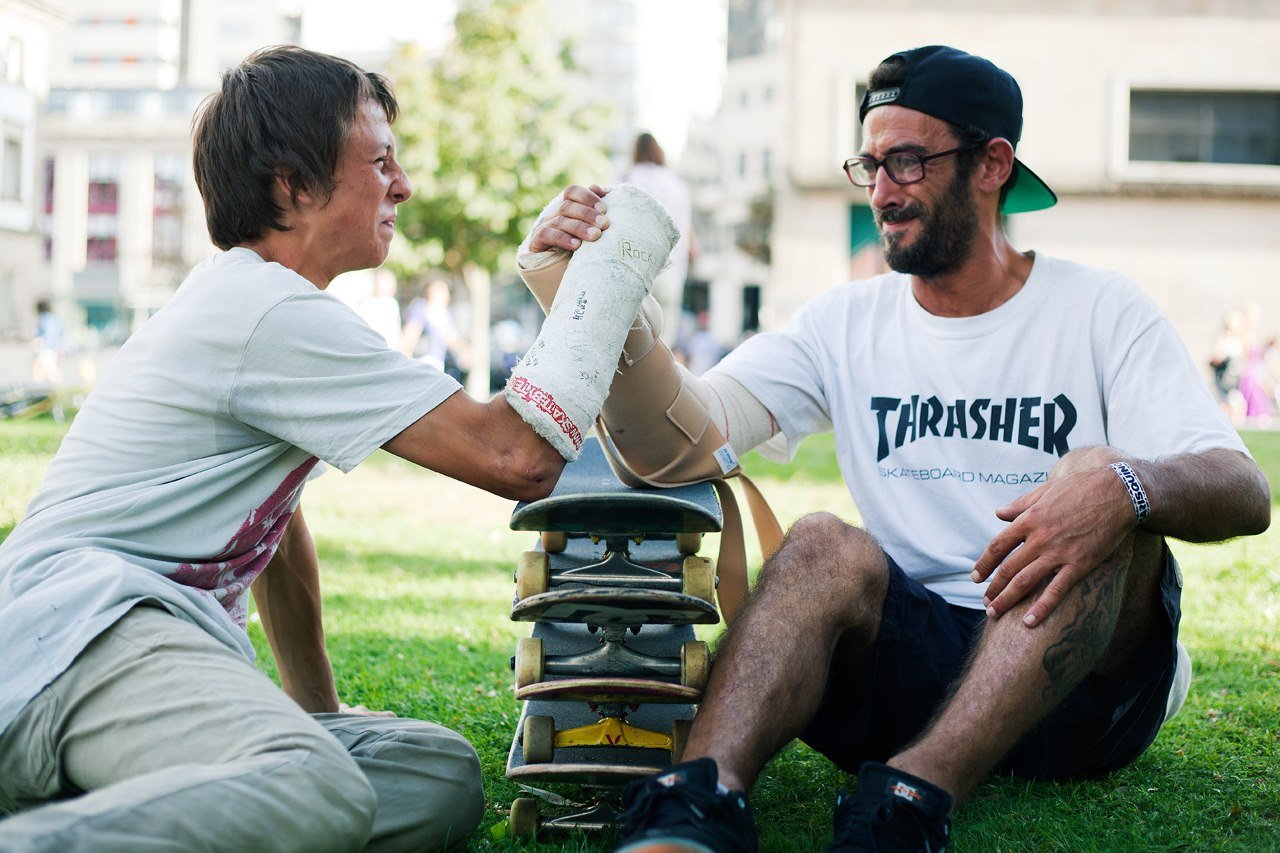
Photo of Luís Moreira.
Do you have a favorite camera setup for photographing skateboarding?
My favorite setup is the one I have for street use. It’s my favorite. I don’t have any more or better, so I love what I have.
How do you deal with unpredictable street conditions in terms of light and environment?
I deal with it very carefully or as carefully as possible. I photograph everything in manual mode and so you have to always pay attention and always be making the necessary adjustments so that you can have a good image.
And now you’re taking pictures with some settings on your camera and then a cloud appears blocking the sun and you have to go and readjust it or, because you don’t think that framing is what best suits the image, you’ll have to set things up, go to the other side of the street or something like that.
You have to always be sharp-minded, it’s not just about being there and clicking on the machine, there are things that come to mind and that go through your head that you have to do.
Have you ever had a technical mishap during a session that made you miss “that” photo?
Unfortunately, there have been problems connecting the lens to the camera, the flash not firing due to communication failure or power failure. Yes, I’ve already lost some beautiful photos because of this. I was screwed.
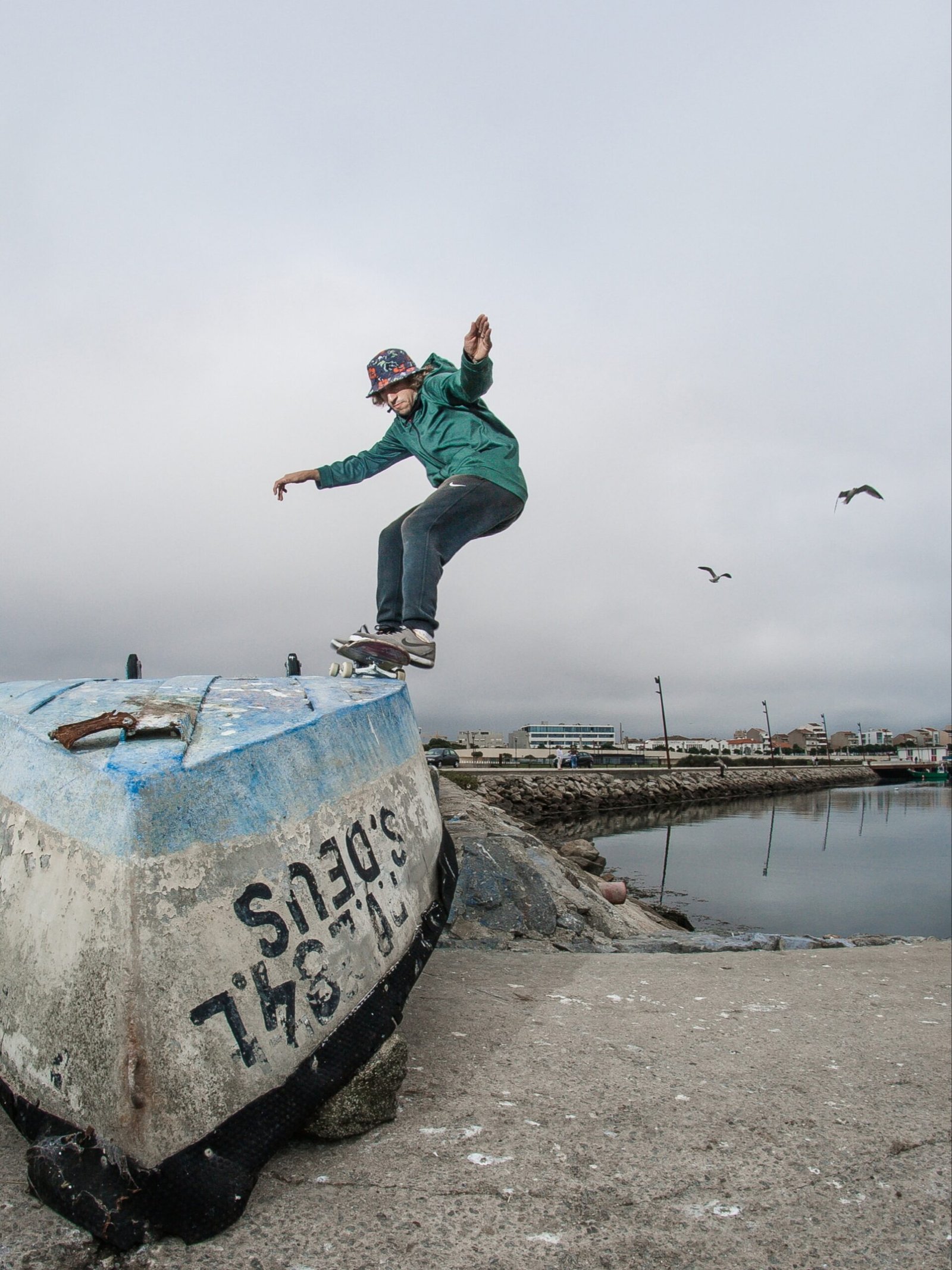
Is there a technique or trick you’ve developed over the years that is your signature?
I don’t have that notion of technique. I think I never do things the same way. I always end up doing things differently. There is no technique.
How do you see the evolution of skateboarding photography in Portugal in recent years?
There are a lot more people taking pictures, which is good, it gives more different views and a little more visibility for the skaters. With more people taking pictures, there are more skaters to be seen.
And the evolution of photography has to do with people’s know-how over the years and with the brutal evolution that skateboarding has undergone. I think one thing complemented the other. As skateboarding improved, photography improved. And with more photographs, because there were more people capturing images.
Do you think social media is changing the way skateboarding photos are consumed and valued?
I’ve never done that math, but now that I think about it, man, I think it is changing a little bit. It’s a little bit more disposable.
So it’s a lot of information, you also don’t have the capacity to retain it all and maybe you end up devaluing it a little, yes.
What advice would you give to someone who wants to start photographing skateboarding today?
Dude, come out and take pictures. Don’t come out with the feeling that “oh I don’t know, oh I can’t do it”. No, bro, do your thing. No one is competing with anyone. Relax and do your thing. Just go.
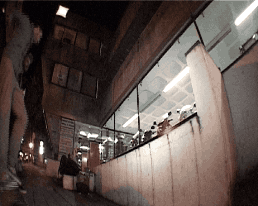
Do you have any future projects or ambitions that you can share with us?
I don’t have any plans. And I wouldn’t call it ambition, but I would like to be a little more involved, stronger. But for other things, they are as they are and we do what we can, with the people we can, in the conditions we can.
But I don’t have any more projects, I’m open to everything.
If you could choose any place in the world for a skateboarding photoshoot, where would it be and why?
Man, it’s really hard to choose one. You should know better than anyone that it’s really hard to choose one.
I have a huge list and I can’t tell you just one in particular because I want to be everywhere.
